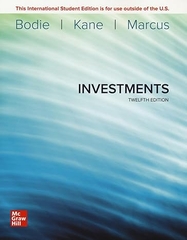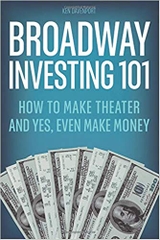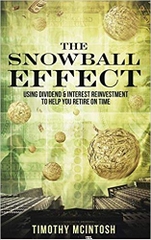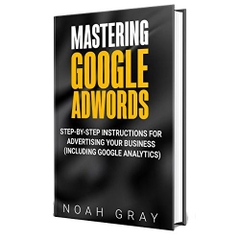-
-
-
Tổng tiền thanh toán:
-
-
Thông tin
-
Tìm sách theo yêu cầu
Book Description
Publication Date: January 30, 2006
This is simply the world's most useful book for personal investors who want to rely less on the so-called "experts" and more on their own intelligence and knowledge. The author presents systematic value and growth strategies that draw on the best ideas from more than 20 of the world's leading money managers -- and shows you how to implement each strategy step-by-step, using free or low-cost information available on the Internet. Domash introduces never-before-published advanced analysis strategies, shows how value investors really pick stocks, and presents new ways of quantifying a stock's risk. This book covers issues most books simply ignore, including how to evaluate a company's business plan and true financial strength, how to set your own target prices, and most important, when to sell .
Editorial Reviews
About the Author
HARRY DOMASH publishes Winning Investing, a monthly stock and mutual fund advisory newsletter, and the Dividend Detective website for dividend investors. He also conducts fundamental analysis workshops and is a frequent speaker at the American Association of Individual Investors’ meetings. Domash’s investing tutorial columns appear in the San Francisco Chronicle and theSanta Cruz Sentinel newspapers and on the MSN Money website. His fundamental analysis columns have appeared in Business 2.0 magazine. He is the author of The Everything Online Investing Book: How to Use the Internet to Analyze Stocks & Mutual Funds (Adams Media Corporation) and runs the www.winninginvesting.com and www.dividenddetective.com sites for personal investors.
Excerpt. © Reprinted by permission. All rights reserved.
Introduction
"Not everything that can be counted counts, and not everything that counts can be counted."
—Albert Einstein
This is a book about analyzing stocks.
The process of writing this book turned out to be a huge educational experience for me. I thought that I knew something about the subject when I started. After all, I'd been teaching it, writing about it, and doing it for years.
I had pored over scores of investing how-to books by famous and not so famous gurus and studied their teachings. I meticulously researched how I would have fared if I had followed their strategies in the past. Based on their work, I synthesized and tested my own strategies.
In the process of researching this book I interviewed 15 professional money managers and market analysts. I had never met any of them when I started. I found some because they managed best-in-class mutual funds with solid long-term market-beating performance records. Others were market analysts or private money managers practicing innovative strategies that I'd heard about from other professionals or through their own writings. About half of those I contacted graciously agreed to talk to me.
In truth, I may have misled them. They probably thought I was writing one of those books that features a single guru per chapter, a sort of minibiography describing their childhood, working style, office environment, as well as their investing methods.
I didn't do any of that. I focused our conversations on just three areas: (1) how do they identify investment candidates, (2) how do they analyze them, and (3) how do they decide when to sell.
I had interviewed money managers before, but not at that level, and not in this context. It was an on-the-job learning experience, and I flubbed the first couple, in terms of asking the right questions. But after a while, I got the hang of it.
Interviewing a money manager is a lot different from reading a book they've written, or hearing them speak. For starters, you don't have to go over the same ground if you've already read their works, or heard descriptions of their methods. Instead, you can zero in on the details, asking questions like: How do you define overvalued? How do you identify good management? How do you pinpoint an industry's strongest player? What are your sell signals?
Often the conversations took me to unexpected places. For instance, I was unaware of Porter's Five Forces Model before Nicholas Gerber gently brought it to my attention (by the time Ken Shea mentioned it a week or so later, I responded as though it were old hat). The Porter model inspired the business plan evaluation strategy that became Tool #5.
Some interviews led me to academic research that I'd always assumed was just too, well, academic, to be of interest. That's how I discovered the work of University of Chicago Business School professor Joseph Piotroski, whose research inspired the fiscal health exam featured in Chapter 10.
Perhaps my biggest surprise concerned value investing. I could never figure it out before. I'd read the books packed with data proving that low P/E stocks outperform glamour stocks, but I could never make it work. The turkey's P/Es just kept getting lower after I bought them. After interviewing several money managers, it hit me that what they did bore little resemblance to what I'd read about value investing. They weren't buying low P/E stocks. They were buying great companies that had stumbled! There's a world of difference between those two approaches.
The wealth of information that these market experts and researchers so kindly shared with me forms the basis for what follows. But being an ungrateful sort, I didn't give them their deserved recognition by describing each of their strategies separately. Rather, I distilled them into the combined analysis tools and strategies that make up this book.
Who Should Read this Book
This is not a get-rich-easy kind of book. There are no magic formulas revealed. I wrote it for people who know that making money in the stock market takes more than running a screen or watching CNBC. I wrote this book for investors willing to put in the time and effort it takes to find and research profitable stock investments.
What's in this Book
I've read many investing books filled with great concepts and strategies that left me feeling unfulfilled, because they didn't tell me how to put those wonderful ideas into practice. This book describes practical step-by-step strategies for finding, researching, and evaluating investment candidates. Equally important, it also tells you when to sell.
I describe two step-by-step strategies, one for growth stocks, and the other for value investors. Some experts advise that both are, in fact, similar strategies. While it's true that you can have a value-priced growth stock, the two analyses processes are very different. When value investors are selling, growth investors are buying. So it's unlikely that the value and growth investors would own the same stock at the same time. While the two strategies are different, they draw on a common set of analysis tools.
What's Different?
This isn't a rehash of conventional wisdom and familiar strategies. The methods described make use of information readily available to anyone connected to the Internet, but in new ways, including:
How to Gauge the Risk of Owning a Specific Stock
In the past, investors hrelied mostly on past performance to determine the risk of owning a stock. But in the end, stocks move in response to changes in a company's earnings prospects. A price chart shows you history; analyzing fundamentals can help you see the future. You'll discover how to use those fundamentals to evaluate the risks specific to each stock.
Analyzing the Analysts
Recent events demonstrate that you can't depend on analysts' recommendations to make money in the market. But there's still much to be learned from their ratings and forecasts.
What a Stock's Valuation Tells You
Knowing the expectations implied in a stock's valuation tells you much about the rewards versus risks of owning the stock.
How to Set Target Prices
Something that the pros always do, but nobody ever told you.
Industry Analysis
Has your candidate picked a market worth pursuing? If so, are you riding the winning horse?
Business Plan Analysis
Is your candidate more like Wal-Mart or Kmart? Analyzing its business plan will help you find out.
Financial Fitness Evaluator
Bankruptcies are bad news for stockholders, but nobody ever told you how to find out if your stock is a bankruptcy candidate.
How to Use Sale Forecasts
Analysts' consensus sales forecasts have only recently become available. Here's how to use them to identify companies likely to come up short at earnings report time.
Analyze Profitability
Profitability is more than earnings per share. Here's how to find out if your candidate is really making money.
Detect Accounting Shenanigans
Some executives will do whatever it takes to meet earnings forecasts. Here's how to find out if they're cooking the books to do it.
When to Sell
Specific rules for selling, depending on whether you're a growth or value investor.
Notes on Examples
Most of the examples used to illustrate the recommended analyses strategies draw on data that was available on a particular historical date. However, many of the strategies developed out of interviews and research conducted specifically for the book. Consequently, the examples demonstrate what could have been done, but not necessarily what I did on those dates.
Many examples compare annual operating characteristics of firms that have different fiscal year-end dates. For the sake of clarity, I used the closest calendar year for the comparisons. For instance, if one company's fiscal year ended November 30, 1999, and another on January 31, 2000, I labeled the annual data for both as calendar year 1999. So while the figures shown may be technically inaccurate, they're close enough to support the point made by the examples.
Accounting Shortcuts
Certain accounting formulas such as return on assets call for determining the average asset totals over the course of a year. Instead, I use the year-end figures because you can pick them directly off of the balance sheet instead of having to calculate them. Consistently applying such shortcuts simplifies the calculations and won't materially affect your results.
Frequently Mentioned Websites
These Websites are the primary resources necessary to implement the analysis described in this book. Most are referenced in throughout the book, so I've listed their Web addresses (URLs) here rather than everywhere that they appear.
The addresses of additional Websites required only for specific analysis strategies are included where they're referenced.
Free Edgar (http://www.freeedgar.com): All firms' SEC reports are posted on the SEC's own EDGAR database (http://www.sec.gov), but most reports are lengthy and it's difficult to locate specific information. Free Edgar and a number of other sites provide a table of contents for most reports so than you can locate and download specific sections such as the management's discussion, the statement of cash flows, and so forth. Most of these sites require a subscription, however Free Edgar, as the name implies, as of May 2002, was still free.
Hoover's (<a href="http://www.hoov...
Product Details
File Size: 3577 KB
- Print Length: 416 pages
- Simultaneous Device Usage: Up to 5 simultaneous devices, per publisher limits
- Publisher: FT Press; 1 edition (January 30, 2006)
- Sold by: Amazon Digital Services, Inc.
- Language: English
- ISBN-10: 0137010230
- ISBN-13: 978-0137010233
- ASIN: B000P28WEO
- Text-to-Speech: Enabled

- X-Ray: Not Enabled

- Lending: Not Enabled
- Amazon Best Sellers Rank: #767,972 Paid in Kindle Store (See Top 100 Paid in Kindle Store)
XEM THÊM TẠI AMAZON.COM
- Thông tin chi tiết
- Mục lục
- Đọc thử
- Đọc thử
- Đánh giá & bình luận của người mua
- Những cuốn sách cùng chủ đề hoặc có liên quan
Tại web chỉ có một phần nhỏ các đầu sách đang có nên nếu cần tìm sách gì các bạn có thể liên hệ trực tiếp với Thư viện qua Mail, Zalo, Fanpage nhé
Đăng ký nhận tin qua email
Hãy đăng ký ngay hôm nay để nhận được những tin tức cập nhật mới nhất về sản phẩm và các chương trình giảm giá, khuyến mại của chúng tôi.












